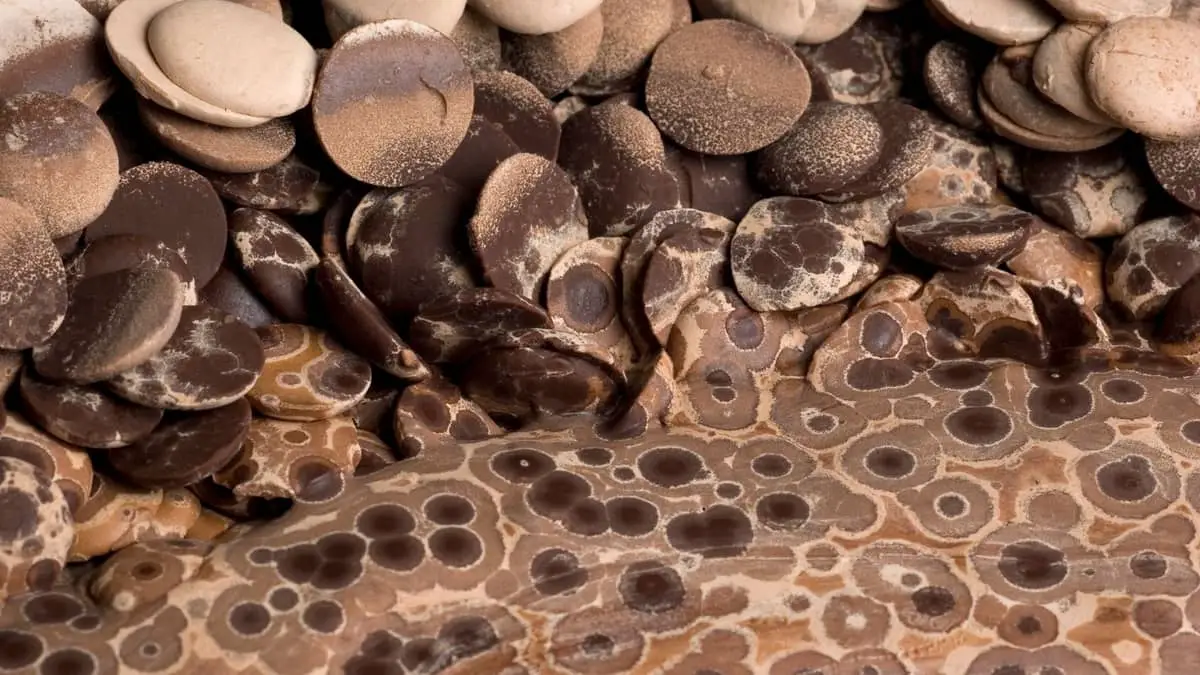**

Image: www.chocolatetemperingmachines.com
Chocolate, that indulgent delight, is prone to an all too common pitfall – chocolate bloom. When chocolate blooms, its smooth, glossy surface transforms into an unsightly, waxy appearance, leaving you with a less appetizing treat. But fear not, for with a few simple tricks and a bit of understanding, you can restore your beloved chocolate to its former glory. Let’s dive into the delectable world of chocolate bloom and explore the art of chocolate rehabilitation.
Defining Chocolate Bloom: The Unsightly Disguise of Crystalline Chocolate
Chocolate bloom, also known as sugar bloom and fat bloom, is a harmless but cosmetically undesirable phenomenon that occurs when the cocoa butter in chocolate separates and crystallizes, leading to a change in its appearance. This separation can happen due to fluctuations in temperature, moisture, or aging. Fat bloom manifests as white or gray blotches on the chocolate’s surface, while sugar bloom appears as a dusting of tiny crystals.
Unveiling the Hidden Chemistry: The Science behind Chocolate Bloom
To understand how to fix chocolate bloom, we must delve into the chemistry behind this transformation. Cocoa butter, the main fat in chocolate, is made up of triglycerides, which are molecules containing three fatty acids attached to a glycerol backbone. When these triglycerides are arranged in a stable crystal structure, the chocolate has a smooth and velvety texture. However, when this arrangement is disrupted, the triglycerides rearrange themselves into less stable crystal forms, leading to the formation of bloom.
Combating Chocolate Bloom: Restoring Balance to the Chocolate’s Structure
Once chocolate has bloomed, the key to fixing it lies in restoring the stable crystal structure of the cocoa butter. This can be achieved through two techniques: tempering and melting.
Tempering: A Symphony of Temperature Control
Tempering is a precise process where chocolate is heated and cooled in stages to create a stable crystal structure. It involves raising the temperature of the chocolate, holding it at a specific point, then gradually cooling it, inducing the formation of fine, stable crystals. This meticulous technique helps prevent bloom and guarantees a silky-smooth result.
Melting: A Journey through Liquid Transformation
Melting chocolate, if done correctly, can also eliminate bloom. By gently melting chocolate over a double boiler or in the microwave, the unstable crystals melt and can recrystallize into a stable form when the chocolate cools. It’s crucial to avoid overheating the chocolate, as this can damage the cocoa butter and further promote bloom.
Preventing Chocolate Bloom: A Proactive Approach
While fixing chocolate bloom can be a successful endeavor, prevention is always the wisest strategy. Here are a few tips to keep your chocolate bloom-free:
-
Maintain a Stable Temperature: Chocolate is a temperature-sensitive treat. Ideally, it should be stored at a cool, consistent temperature between 55-60 degrees Fahrenheit, away from direct sunlight and heat sources.
-
Control Humidity: Moisture can wreak havoc on chocolate. Avoid exposing it to high humidity levels, as this can lead to moisture condensation and subsequent sugar bloom.
-
Proper Packaging: Store chocolates in airtight containers or wrap them tightly to minimize air exposure. This prevents moisture and oxygen from penetrating the chocolate, extending its shelf life and minimizing the chances of bloom.
-
Avoid Temperature Fluctuations: Rapid changes in temperature can disrupt the crystals in chocolate, contributing to bloom. Allow chocolate to warm up gradually at room temperature before consuming it.
Appreciating Chocolate Bloom: Embracing Imperfection
While chocolate bloom may affect the visual appeal of your favorite treat, it’s important to note that it does not affect the safety or taste of the chocolate. If you do encounter chocolate bloom, don’t despair. Tempering or melting it can restore its smooth texture, making it a delectable treat once again.
Chocolate Bloom: A Culinary Lesson in Patience and Precision
Fixing chocolate bloom requires a careful touch and an understanding of the science behind it. Tempering and melting are valuable techniques that, when executed correctly, can resurrect your beloved chocolate. By embracing the occasional bloom as a culinary challenge, you’ll expand your knowledge and deepen your appreciation for the complexities of this delightful confection.

Image: cakedecorist.com
How To Fix Chocolate Bloom